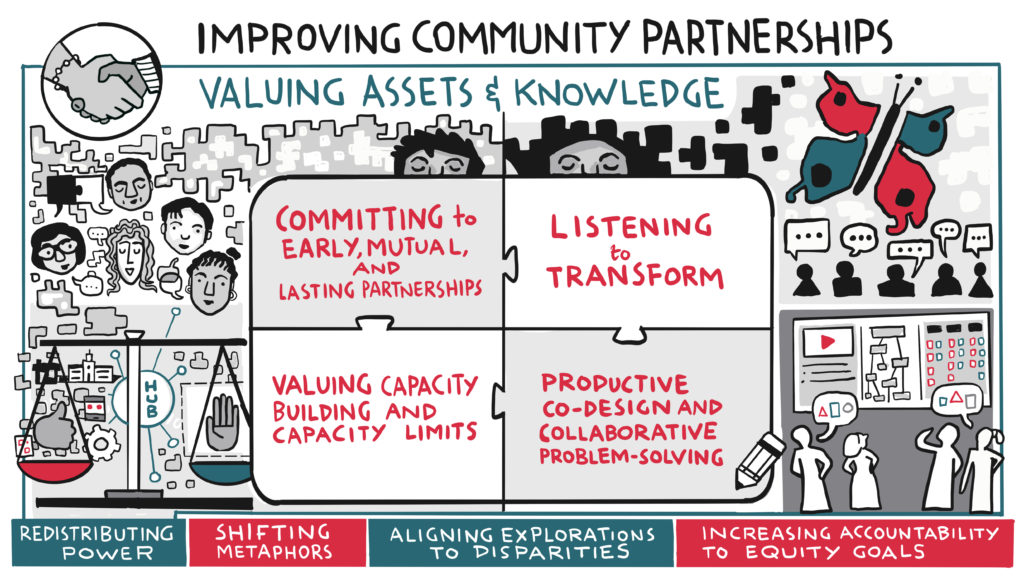
CIRCLS’21 participants recommended improving how researchers partner with communities in which emerging technologies for teaching and learning will be used. Researchers should commit to partnerships early in their projects and seek partnerships that last longer than a three-year project cycle; they should listen in order to transform their work; they should value what communities are already doing and use co-design processes to incorporate community assets; and they should value capacity building (and capacity limits).

In a shift to the social activism model (empowering) from the technology transfer model (broadening), there was a strong call across most strategy sessions about involving communities of teachers and learners early in the research process, listening to them, and yielding more power to their voices while making decisions about what technology designs merit exploratory research and which questions about the novel technologies deserve priority. Researchers’ view of who to partner with was very broad—students, teachers, parents, policymakers, school leaders, community center leaders, museum staff, and other stakeholders might all be viable and important partners.
Committing to Early, Mutual, Lasting Partnerships
Community members observed that we need to form mutually beneficial, long-term partnerships to ensure our work has a meaningful impact. Getting feedback from teachers on instructional materials or research instruments is not a partnership—that is asking participants to provide a service to the researcher with little to no benefit for the participant. A research partnership requires that the researcher starts by learning about and understanding the needs and interests of the partner organization or participants and commits to exploring those together.
Listening to Transform
Researchers at the meeting reflected on their own experiences when listening to student voices, working closely with teachers, or connecting with leaders and policymakers and how these experiences completely changed their view of the problem they were trying to solve. They realized they may extrapolate from their own experiences of teaching and learning in ways that do not fit what today’s teachers and learners want—and this may block progress toward broad equity goals. Conversely, they reported excitement and challenges resulting from deeply listening to partners for ideas that could transform their intended exploratory research.
Valuing What Communities are Already Doing
Some of the most important work in building capacity for local communities to achieve self-identified goals is already happening by stakeholders in those communities. The community may have the greatest impact by putting our skills in the service of those stakeholders. Our community can benefit as much from learning about what these communities are doing as they can from disseminating information about their own work.
Valuing Capacity Building
Researchers in this space recognize that when they work with partners, they have to focus on giving something valuable to the community with which they work. Because their exploratory prototypes may not be ready for prime-time even at the end of their project, the work they do to build capacity in communities of practice to solve problems that the community cares about has to count as a valued outcome of doing partnership work. One outcome of valuing capacity building could be the emergence of regional hubs or networks that work over long periods of time with researchers on issues related to emerging technology. Another outcome can be to help partners lead dissemination efforts and outreach to policymakers.
Next page: Rethinking Broader Impacts
